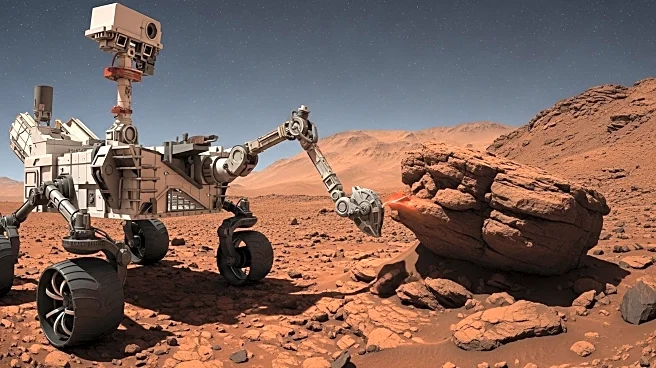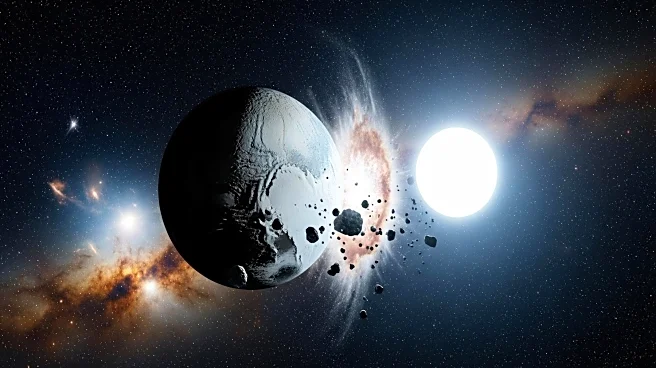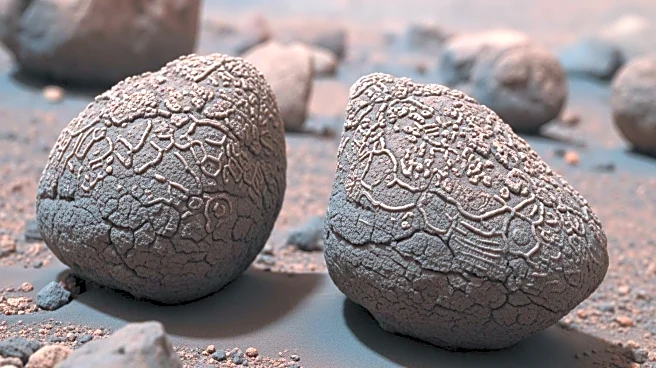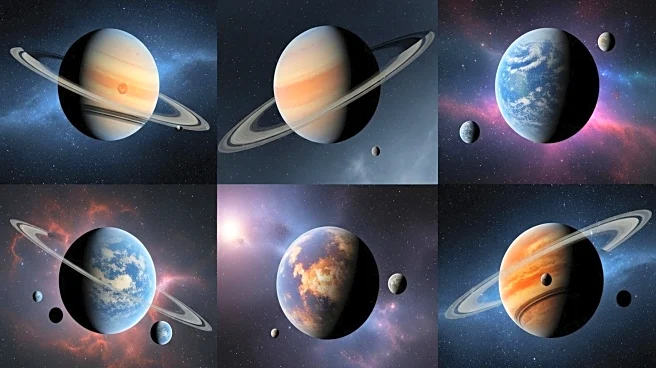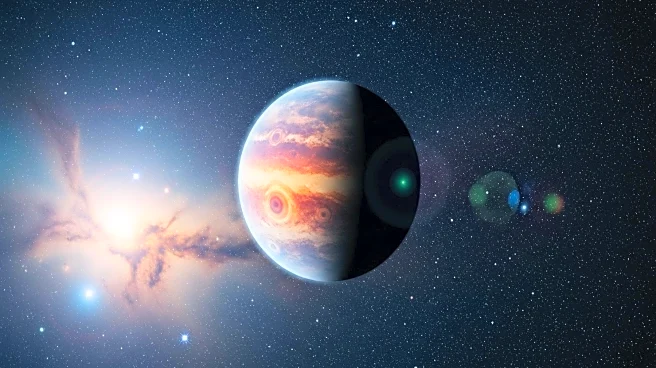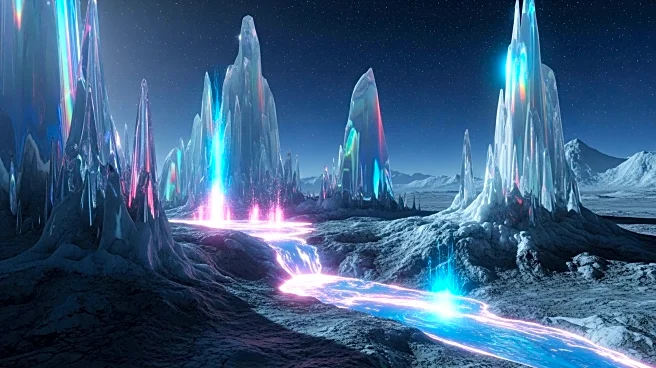What's Happening?
Recent research presented at a planetary science conference in Finland has raised doubts about the presence of life on Saturn's moon Enceladus. Scientists have been intrigued by the moon's plumes of water vapor, ice particles, and organic compounds, which suggest a subsurface ocean potentially capable of supporting life. However, the new study suggests that these organic compounds may originate from the moon's frozen surface, influenced by radiation from Saturn's magnetic field. Researchers recreated Enceladus' environment in a laboratory, using an ice chamber to simulate the moon's surface conditions and bombarding it with high-energy ions. The study found that radiation-induced chemical transformations could produce compounds similar to those detected in Enceladus' plumes by NASA's Cassini mission.
Why It's Important?
The findings challenge previous assumptions about the habitability of Enceladus' ocean, urging caution in interpreting the moon's plumes as signs of life. This research impacts the scientific community's understanding of extraterrestrial life and the methods used to detect it. If the organic compounds are indeed formed on the surface rather than in the ocean, it could alter the focus of future missions and studies aimed at discovering life beyond Earth. The study highlights the need for more sophisticated instruments capable of distinguishing between surface and subsurface origins of these compounds, potentially influencing the design of future space missions.
What's Next?
Further research is needed to confirm the origins of the organic compounds on Enceladus. Scientists may develop new experiments or missions to better understand the moon's environment and the potential for life. The findings could lead to a reevaluation of the targets and methods used in the search for extraterrestrial life, with a focus on distinguishing between surface and subsurface chemical processes. Future missions to Enceladus or similar icy moons may incorporate advanced technology to provide clearer insights into their habitability.
Beyond the Headlines
The study raises broader questions about the role of radiation in shaping the chemical environment of icy moons and its implications for astrobiology. Understanding these processes could provide insights into the potential for life in other parts of the solar system and beyond. The research also underscores the importance of interdisciplinary approaches, combining planetary science, chemistry, and astrobiology to unravel the mysteries of extraterrestrial environments.


